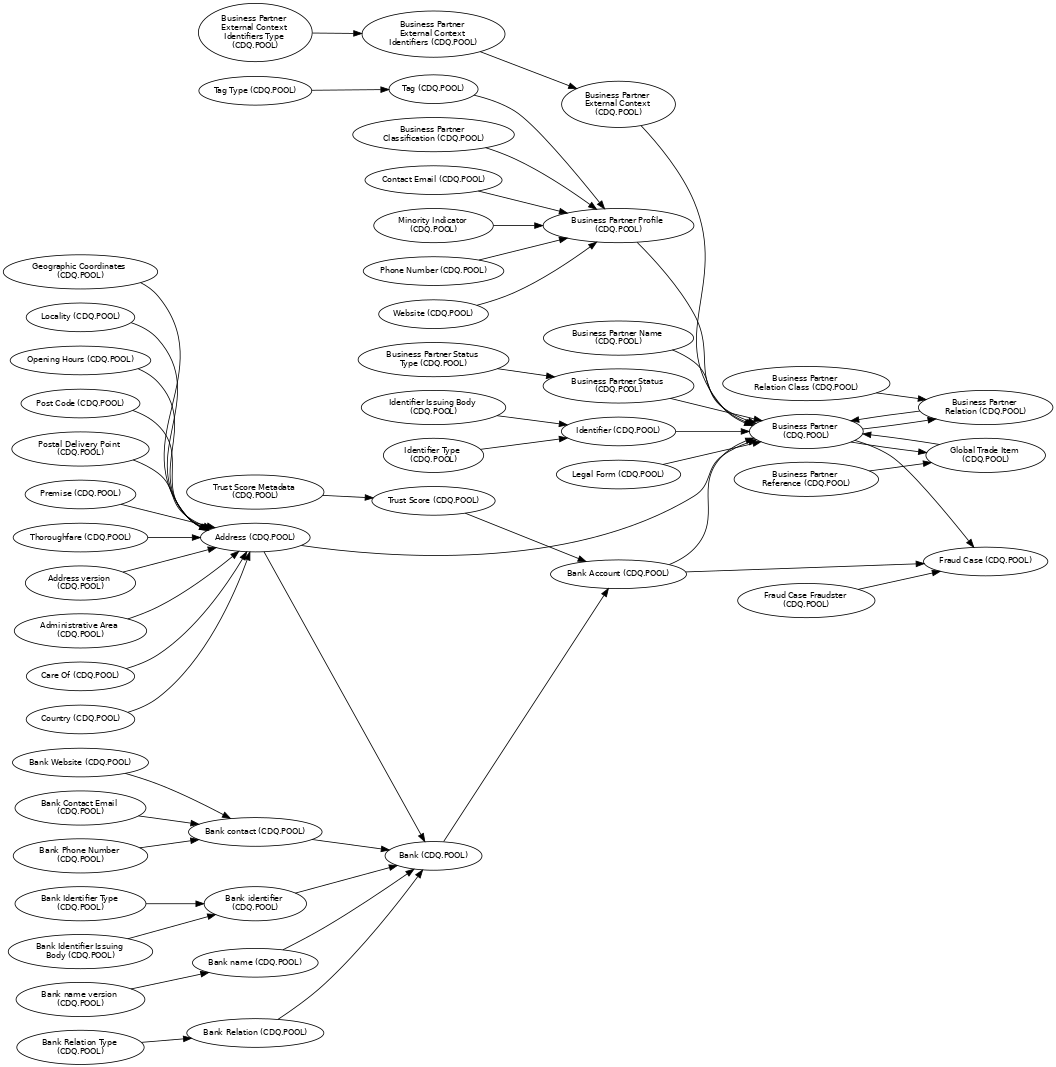Data harmonization: the inconspicuous but crucial basis for data management

Have you ever had the challenge to connect two different systems in your company holding two different sets of customers? Have you ever tried to base a reporting for multiple of your organizations regions based on the same Business Partner base? Have you ever tried to add or change external data sources used as reference for your master data? If so, then you will know the pain of combining different data models and correctness criteria.
Harmonization and data modeling may sound like technical and complex terms, but they are critical components in creating a structured and streamlined approach to data management. These concepts allow companies to simplify data from various sources and bring it together into a unified format.
With regards to business partner master data, harmonization involves defining data attributes with specific fields, formats, relationships, and hierarchies, resulting in a standardized data model. The data model serves as a blueprint for characterizing business partners with all relevant attributes such as addresses, contacts, legal form, bank information, relationships, and more.
This structured approach ensures data consistency, accuracy, and completeness, allowing easy comparison and analysis of business partners.
Why is a harmonized data model crucial?
Having a single, harmonized data model instead of multiple models has several advantages :
- Consistency: A common data model ensures consistency and uniformity in the representation and interpretation of data across different departments and business partners. This eliminates confusion and reduces errors, as everyone is working as per the same set of definitions and rules.
- Integration: A harmonized data model makes it easier to integrate data from different sources and systems, as the data elements have a common definition and structure. This enables organizations to gain a more comprehensive view of their operations and customer data.
- Data quality: A single data model helps to ensure data quality, as all data inputs are validated against a consistent set of rules and definitions. This minimizes errors and improves the accuracy and reliability of the data.
- Maintenance: Maintaining multiple data models can be time-consuming and complex. Changes made to one model may not be reflected in others. A single data model reduces this complexity, as changes made in one place can be automatically propagated to all systems that use the model.
- Collaboration: A harmonized data model enables better collaboration between departments and business partners, as all stakeholders have a shared understanding of the data and its meaning. This enables more effective communication and decision-making based on a shared, up-to-date view of the data.
- Independence: A harmonized data model contributes to getting independent from external data vendors. Your company can use own standards and exchange data sources at a later stage - it prevents you from having to stage expensive migration projects if sources change.
Who needs harmonized data models?
A harmonized data model for business partner master data is crucial for companies that work with multiple systems and want to utilize this data in a seamless manner. Without a harmonized data model, data integration and cross-system utilization can become complicated and time-consuming . A consistent data model is also essential for effective collaborative data management, as it provides a shared understanding of the data among sharing partners.
In the context of the CDQ Data Sharing Community, the CDQ Data Model serves as the basis for this common understanding and provides a standardized approach to defining business partner master data. The figure below shows a high-level visualization of the CDQ Data Model.

How to profit from a harmonized data model?
The real value of business partner data becomes significantly higher when it is organized and maintained within a harmonized data model. The standardization and consistency of the data enables its effective use across the organization for reporting, analysis, and updates. Moving from a fragmented and inaccurate data environment to a harmonized data model creates opportunities for utilizing data from various sources and systems.
The result is a more comprehensive and usable dataset that can be leveraged to drive better decision making and business outcomes.
A unified data model not only improves the comparability and usability of business partner data, but it also enhances its quality by ensuring accuracy, reliability, accessibility, and trustworthiness. However, it is important to note that a harmonized data model is just one piece of the puzzle and must be complemented with a robust data quality management system.
The implementation of a harmonized and unified data model for business partner data offers numerous benefits, including:
- Improved reporting capabilities: A standard data model allows an easier and more accurate reporting across multiple systems, even if each system stores data differently.
- Single source of truth: The data model provides a clear and defined location for adding, changing, and deleting information, ensuring that data is consistent and up-to-date across the organization.
- Increased system flexibility: The data model can be maintained at a higher level and is not tied directly to individual IT systems, allowing for greater flexibility and ease of updates.
- Simplified mapping to other data models: A consistent data model enables seamless mapping to other data models without extensive adaptations.
- Improved Data Integration: A harmonized data model supports better data integration, as data from different sources can be mapped to a common data model. This enables organizations to gain a more comprehensive view of their business partners, as well as to consolidate data from different systems into a single repository.
How to profit from the CDQ Data Model for Business Partners?
Certainly, the CDQ data model provides all the advantages explained above in the general part.
- Improved data quality: A common data model ensures that data is consistently captured, stored, and maintained in a consistent manner. This minimizes errors and improves data quality, ensuring that the information is accurate and up-to-date.
- Better decision-making: A single, comprehensive view of business partner master data enables organizations to make more informed decisions. This can help to identify trends and patterns, as well as support risk management and compliance efforts.
- Enhanced collaboration: A harmonized data model makes it easier for different departments and business partners to share and access information about business partners. This enhances collaboration and helps to ensure that everyone is working from the same set of information.
Overall, the use of a harmonized and unified data model streamlines data management and supports improved business outcomes.
Are you interested in taking your business partner master data creation and maintenance to a new level? Contact us for a get-to-know and analysis meeting or a demo.

Get our e-mail!
Related blogs
The e-invoicing reality: the gateway is ready, but is your data?
Over the past decade, the EU has steadily shifted from encouraging electronic invoices to mandating them. And while the technology obviously plays an important…
How Henkel is turning master data quality into a service
Every now and then, you come across a project that makes you stop and think: “Now that’s how it should be done!” That’s exactly the case with Henkel and their…
Master Data Management meets AI: work smarter, not harder
Let's be honest, master data management (MDM) often feels like a Sisyphean task. Wrangling inconsistent data, battling data decay, and striving for a single…






